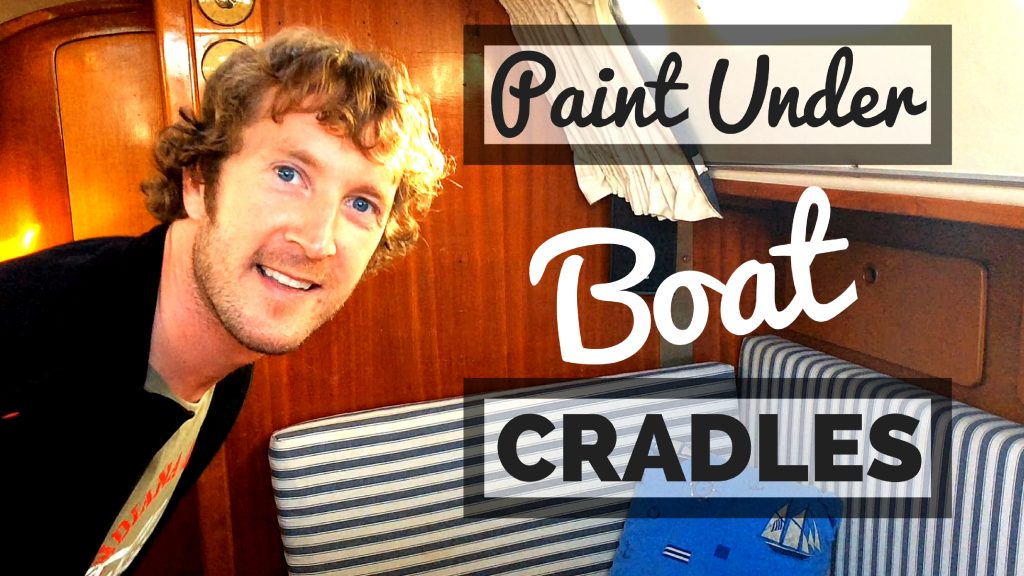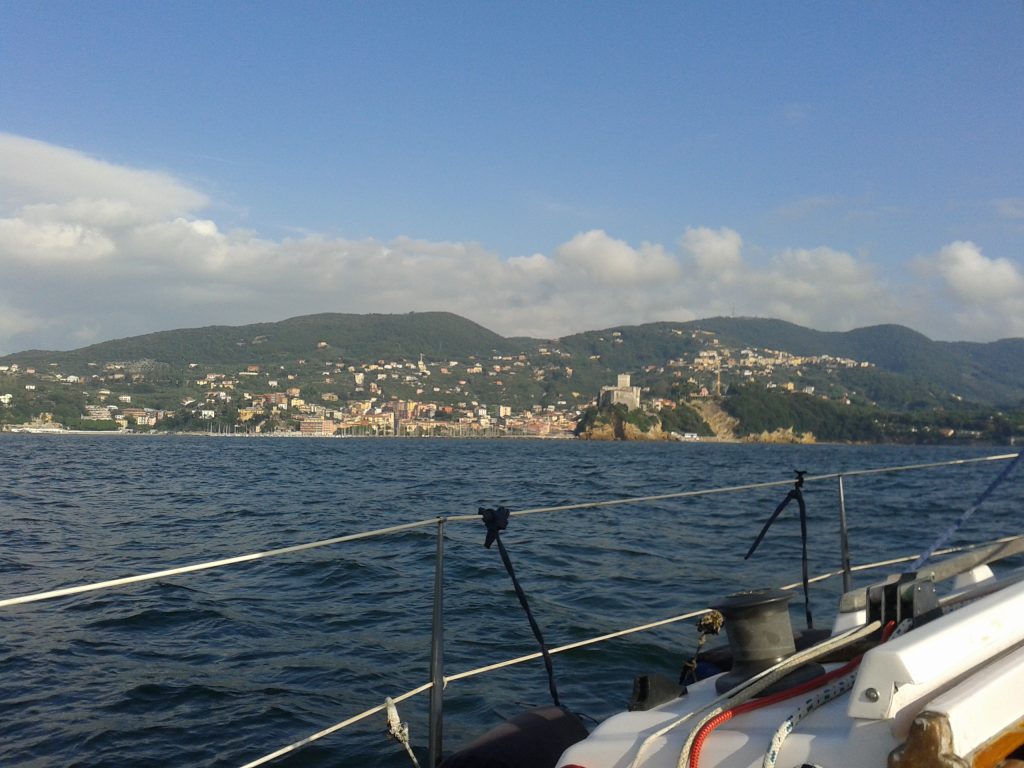
In this post I’ll show you how to paint under boat cradles when applying bottom paint. My video will take you through the entire process step-by-step. If you’d like to ‘cut to the chase’ and watch the video then just scroll further down the page!
Rossella and I dreamt of owning a boat for years before we finally managed to achieve this goal. Every time I went offshore I would spend quiet moments looking over the side of the deck at the beautiful calm waters out at sea, dreaming of being out there in our own boat (on the other hand, when there were hurricane force winds and 10 metre waves, I was glad not to be out there in a small boat!). Every time I was at sea there seemed to be some mystical force drawing me out there at the helm of my own boat. It seems a bit melodramatic written down like that but that is what I felt! Anyway, I knew when the time was right, we would realise our dream of owning a boat.
Well, several years down the line we found our opportunity. We saw a beautiful little boat advertised at a good price. When we went to view it we knew straight away that it was the boat for us. However, it had been moored without being moved for around 18 months. I am not exaggerating when I say it had a marine growth ‘beard’ 12 – 18 inches long. We bought our boat and the rest is history. One of the most pressing jobs which needed to be done was to apply a decent bottom paint. The marina that the boat was in was extremely expensive. To have the boat hauled out, sanded down and painted there would have been far too expensive for my taste. So, after many more hours spent researching online and I managed to find a place where it was possible to do work on your own boat and it was only 10 nm away.
Of course we couldn’t move the boat as it was – we’d have had to enlist the help of one of the tugboats which tow container ships around the bay of La Spezia to drag our green-bearded underbelly towards the accommodating boatyard. So, I donned mask and snorkel and jumped in at the posh marina to do my best impression of a commercial diver. Two hours later, hypothermia appeared to be setting in [commercial divers don’t wear shorts and t-shirt] but our hull was clean enough to make the journey up the coast.

I took the boat successfully up the river (this was an exciting first trip – the previous owner ceremoniously handed me the tiller just before entering the river, which is notoriously difficult to navigate thanks to its ever-shifting, unmarked channel. I then saw that the depth sounder had stopped working [I later fixed it with some olive oil, but that’s another story!] and spent the next hour or so, squeezing the tiller with what must have been a gripping force of around 2000 psi, blindly creeping up a river I’d never been up before, along an unmarked and uncharted channel, without a depth sounder!) and we were hauled ashore and placed onto a boatyard cradle. Due to the awkward position of seawater inlets, the centre of gravity of the boat, the proximity of the mast to the crane, the bumpy ground, and a whole host of other factors, it literally took about 45 minutes of jiggerypokery to get the boat settled in a good position in the cradle. I made a mental note of this and grimaced as I thought of the ‘kaa-ching’ sound that a till makes when I thought forward to the point when we’d need the boat shifted to paint under the cradle supports.
As a boat owner you soon learn that once you are on a boatyard’s soil you are subject to their rules. Most boatyard’s rules are very punctilious and many of their rules often appear to have the fortuitous side-effect of enabling the boatyard to make more and more money from boat owners. ‘You can’t do this, you can’t do that, health and safety, our insurers won’t allow that, blah blah blah.’ I understand exactly why many of them do this and in fact I am sympathetic to their situation. They do have to make money after all. However, when we are talking about me saving money I can be quite a determined character. Fortunately, I had done my homework well and I chose a great place to get hauled out. There was plenty of room for manoeuvre and I was able to crack on with my jobs.
Knowing that I was going to be keeping the boat in a very expensive area, I wanted to use a bottom painting approach which would allow me to not have to be hauled out again for as many years as possible. I sanded the hull back to the epoxy barrier coat and then applied a copper-based anti-fouling paint. This paint is extremely hard and can be repeatedly scraped. I used the technique shown in the video below to paint under the cradle supports. In this way I didn’t have to work to the boatyard’s schedule and I didn’t get charged for the use of the crane.
Watch my video below to see exactly how I was able to paint under the (static) boat cradle supports:
I was actually less concerned about the boat being damaged by the technique I used, than I would have been if the boatyard’s crane was used to shift the boat. I wasn’t very happy with the sling positioning during the lift out and subsequent movement of the boat. [If anyone is thinking ‘Why didn’t you say something then?’ the reason is this: If the boatyard staff position the slings and something goes wrong, they are responsible for any damage. If you stick your oar in and ask them to move the slings, it can be argued, in the event of a subsequent accident, that any damage was a result of your intervention!].
The painting went very well and I was able to apply my special paint to every little part of the hull. The boat went back in the water in May 2014 and has not been hauled out since. I do have to dive on the boat to clean the hull when we want to go anywhere. This is hard work! However, it costs me nothing, nada, zilch, zero, niente… and that is my favourite price!
What is your favourite way of saving money as a boat owner? Let me know by leaving a comment below.
I hope you found this post useful, if so, please share it on social media to help me to provide for my family.
Fair winds!
Cheers!
Chris 👍








Leave a Reply